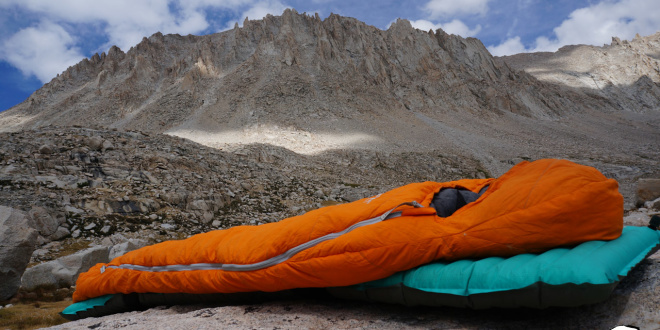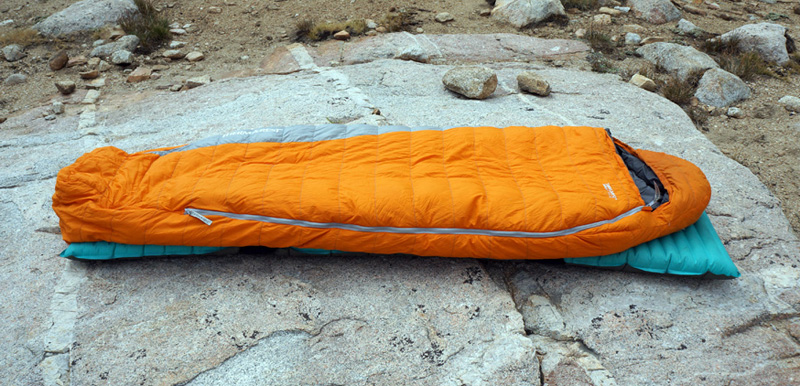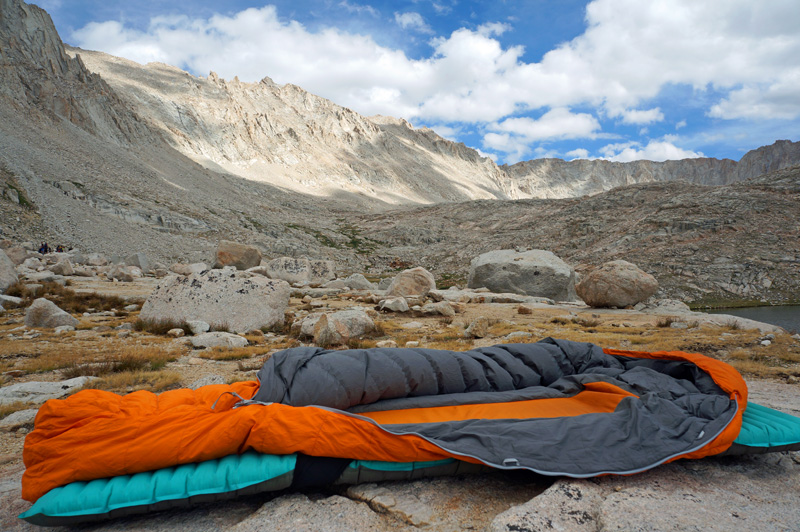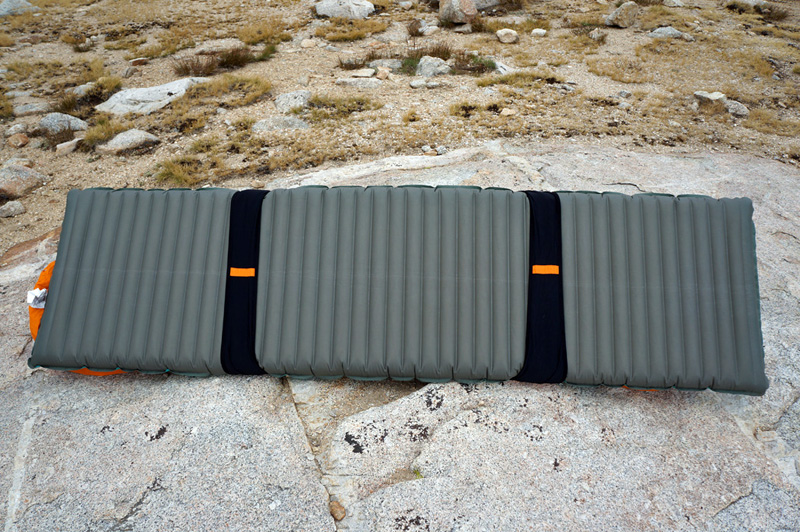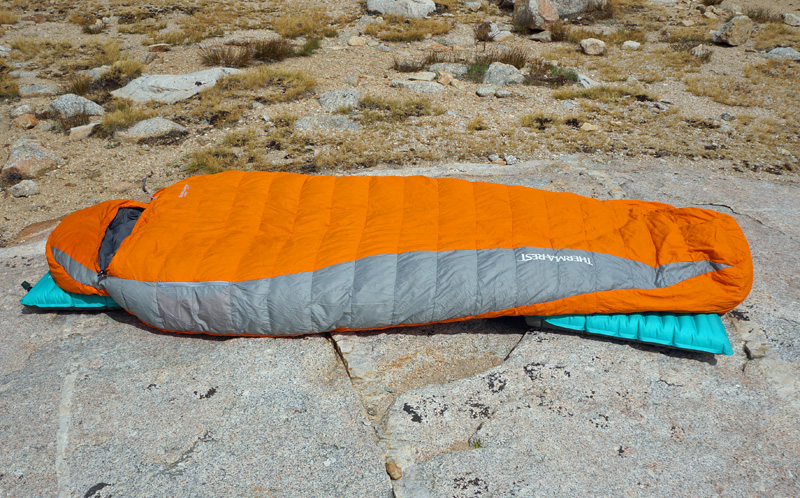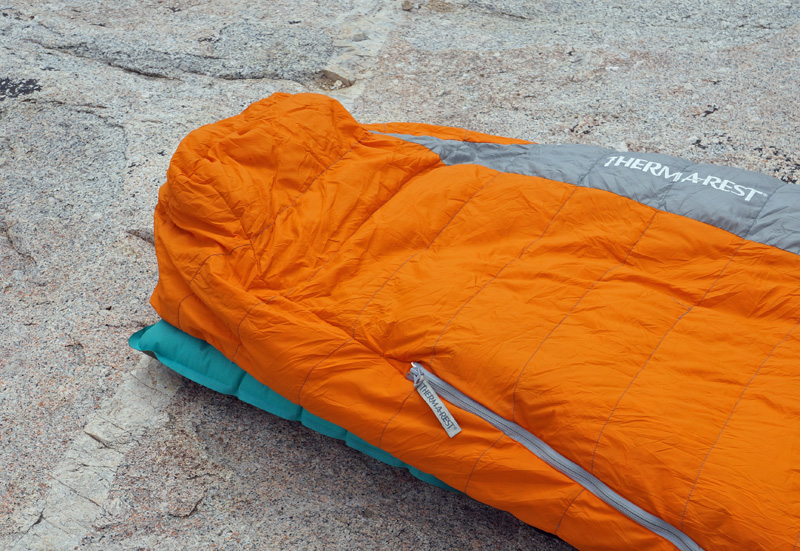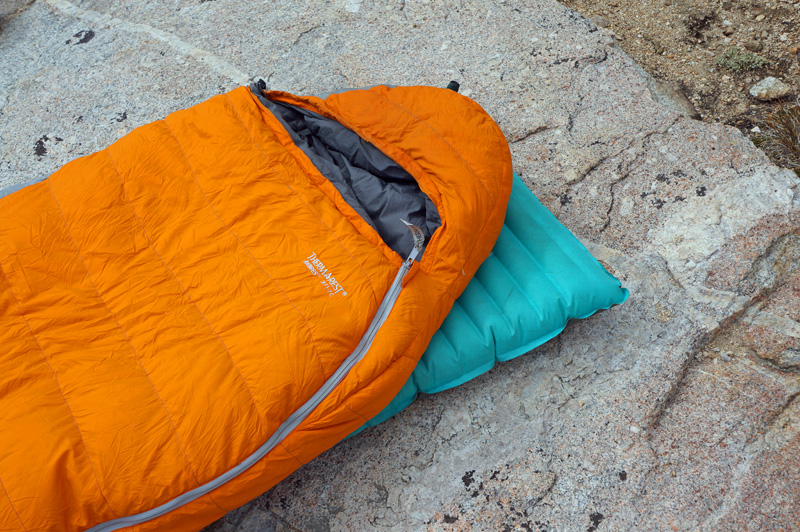When it comes to backpacking with kids, gear weight, compact size and comfort are hugely important especially when it comes to sleeping gear. That’s why my go-to sleeping bag for nearly two years has been a Therm-a-rest Antares 15 degree down bag. It’s more than just a sleeping bag.
About three years ago Therm-a-Rest (www.thermarest.com) came out with a line of sleeping bags that you can slide a sleeping pad into the back of. This has some major benefits: It cuts down on weight (as you don’t need insulation between you and the pad), it cuts down on pack space (less insulation bulk), and it prevents the sleeper from sliding off the sleeping pad in the night. All of these things make for a warm and cozy night sleep and a lighter load… which is important when you’re packing gear for 4 mini adventurers.
Let’s take a look at the Antares features and then talk about how it performs.
Features (Regular Model)
- Style: Mummy bag
- Weight: 1 lb 15 oz
- Fill: 750+ goose down (14 oz)
- Fits: 6 ft
- Packs to: 7” x 12” (8 liters) without compression straps
- Temperature rating: 15 degrees Limit
- Fabric: 30D Nylon
- Shell: 30D Nylon with DWR coating
- Design Features:
- Draft Tubes & Collar
- Snag Free Zipper
- SynergyLink Connectors
- Zoned Insulation
- Stash Pocket
- Sculptured Hood
- Trapezoidal Footbox
- Storage & Stuff sacks
- UPDATES for 2015: For 2015 the bag was updated with water hydrophobic down and a thermacapture lining.
- MSRP: $499.95
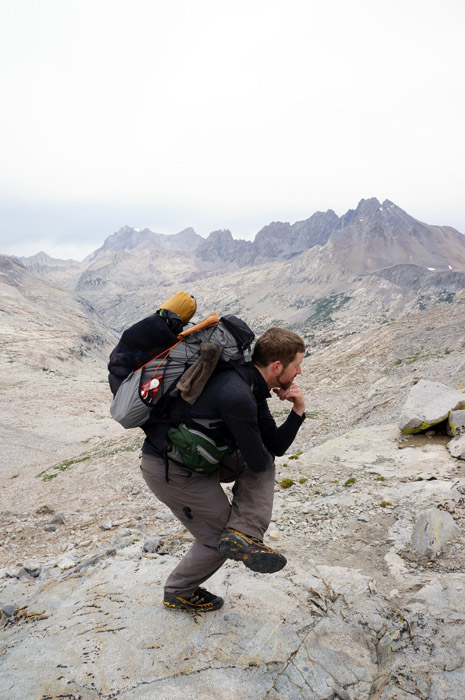
Field Testing:
This bag has been on countless trips, from a 2-week stint on the John Muir Trail in California to the humid Pacific Northwest and into the alpine. I’ve had this bag for close to three years now and leant it out to many very happy friends. I should mention that I use it with my Neoair All Season sleeping pad (which is another excellent piece of kit from Therm-A-Rest). My wife is currently hiking the enchantments with this same bag and they’re expecting snow!
What do I think?
First, a bit of basic sleeping bag insulation science. Insulation works by reflecting heat back to you and cold away from you. It restricts heat transfer by creating a barrier between you and the cold. With down and most synthetic insulations it does that with loft that creates a barrier of dead air space between you and the cold. The down-side (pun intended) is that compressing that insulation means that it can’t do its job. With a sleeping bag, that means that the insulation that you lie on isn’t doing its job. That’s why Therm-a-Rest got rid of the insulation underneath you entirely.
The Therm-a-Rest bags and sleeping pads work together as a sleep system . The Bag provides insulation on top and the pad provides the insulation on the bottom. By doing it this way, the Therm-a-Rest system saves you a significant amount of weight while giving you better insulation between you and the ground.
For disclosure, I’m a side sleeper… when I’m not rolling around and alternating between sleeping on my back and stomach. Fortunately, the straps that connect the bag to the sleeping pad keep me on the pad all night, which means I stay warm and comfortable, without feeling claustrophobic. They also keep out any potential cold breezes between the bag and the pad.
The bag comes with a Durable Water Resistant shell, which while being breathable also sheds light rain. The DWR coating on the bag meant I could comfortably handle rain splash from a heavy storm a year back when I was sleeping under a tarp.
The Bag design is very comfortable for a 5’ 10” average guy. I didn’t find the footbox restrictive, and the mummy hood was the perfect size for me. The Draft collar is key to keeping the warmth in and the cold out. A good draft collar should be a feature you look for on any bag you buy.
Therm-A-Rest distributes the down in their bags “zonally”. That means they put more where you need it. The result of this is an accurate 15 degree rating. That should be qualified. It’s accurate for me. All bags are rated on an average and you should take into account if you’re a warm or cold sleeper.
Oh, and take advantage of the extra storage bag included. When you’re not using the bag, a storage bag will help preserve the loft of your down.
On top of all the stellar features and performance of this bag, it’s extremely small when packed. It packs down to 7×12 easily, and without compression straps. You could probably squeeze an inch or two off that with compression straps if you had to… That said, I was able to pack this bag, the Therm-A-Rest Neoair all-season (an excellent pad), a BV500 Bear Vault Bear Canister, stove and pot, and clothes for a two week hike of the John Muir Trail inside a 40 liter backpack. Yah, it’s small.
Room for improvement?
My bag is two years old now, and still performs excellently. If I was to find some improvement for the bag it would be to upgrade to a water resistant down, and even increase the quality of down to an 800+ loft. That said, those features would drive the price of this very economical bag up higher.
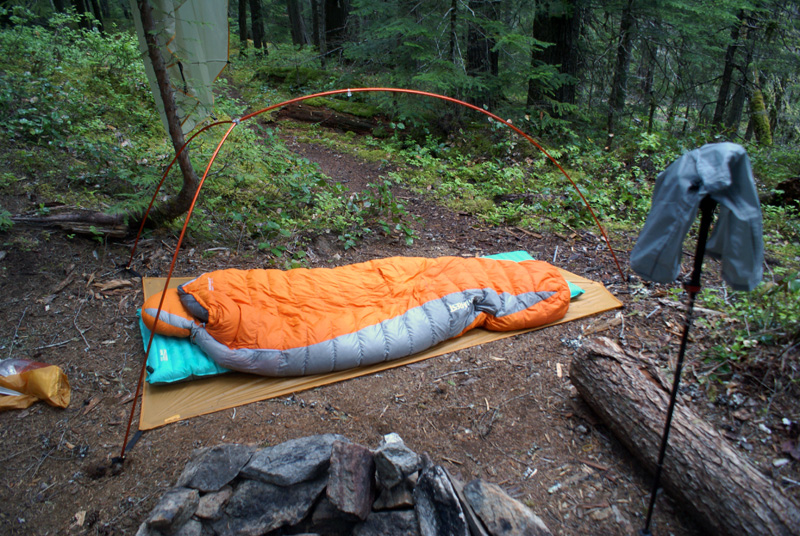
Conclusion
Therm-A-Rest’s entry into the backpacking market has been done correctly. The quality, design and performance of the Antares reflects that of the Therm-A-Rest brand that many of us know and trust. Everyone I’ve lent this bag to has raved about its comfort and performance. I would and have recommended this bag configuration to anyone. Combine it with the neo-air all-season pad and you’ll be warm well into the fall in this excellent 3-season bag.
 The Outdoor Adventure Giving you tips, tricks & recommendations to help make adventuring in the Outdoors fun, safe & exciting for you and your kids.
The Outdoor Adventure Giving you tips, tricks & recommendations to help make adventuring in the Outdoors fun, safe & exciting for you and your kids.
